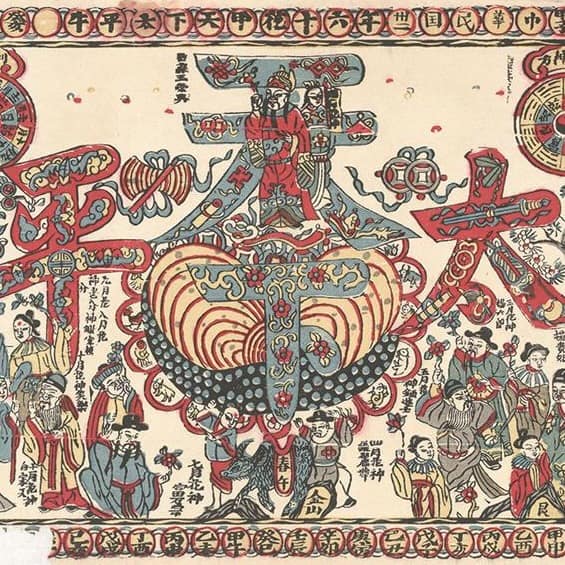As the Chinese New Year approaches, ushering in the Year of the Dragon, our hearts and minds are drawn to the traditions that define this celebration. Among them, Chinese Nianhua and New Year Pictures stand as true works of art.
These creations offer a glimpse into China’s cultural heritage, blending centuries-old traditions with modern creativity. Join me on a journey of discovery as we explore the history, symbolism, and evolution of these captivating folk art treasures.
From chubby babies and celestial warriors to divine gods, these images will inspire cultural exploration in your classroom.
Read also:
- Chinese Knots how-to: The complete guide to Chinese New Year traditional craft
- Unlocking the Secrets of Chinese Calligraphy: Exploring a Timeless Art Form and Its Cultural Significance
- From Phases to Full: 18 Lunar-Themed Children’s Books to Explore the Night Sky

The History of Nianhua Posters
Originating in the Han Dynasty, over two millennia ago, Nianhua began as symbolic representations of Door Gods, thought to offer household protection. As the centuries passed, the Tang Dynasty, spanning from 618 to 907 AD, witnessed the transformation of these images into more sophisticated and widely appreciated forms.
During the Ming Dynasty, from the 14th to the 17th century, Chinese Nianhua flourished as a significant cultural artifact. This era was marked by a synergy of governmental support, the rise of popular literature, and crucial advancements in woodblock printing, a technique that enabled the replication of intricate designs on a large scale. The establishment of specialized workshops during this period signaled the emergence of Nianhua as both an art form and a significant commercial enterprise.
By the time of the Qing Dynasty, which lasted until the early 20th century, Nianhua had reached its artistic pinnacle, embracing various techniques, including woodblock, stone-block, and watercolor painting. The woodblock printing technique, where artisans carved images into wooden blocks to press onto paper, was particularly instrumental in popularizing Nianhua. This method was central to the production in renowned centers like Yangliuqing, where artisans would print outlines and hand-paint the colors, infusing each piece with a unique character.
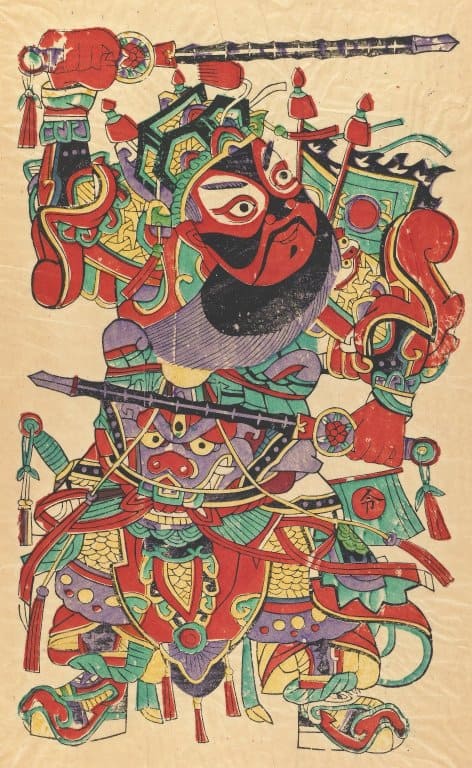
Door Gods (门神, Ménshén): Originating from ancient Chinese folklore, Door Gods are divine guardians that protect against evil spirits. They are traditionally depicted as fierce warriors and are placed on doors as New Year pictures to ward off evil and bring good fortune. The images of these gods, often seen in pairs, are believed to safeguard the household throughout the year.
Kitchen God (灶君, Zàojūn): The Kitchen God is a key figure in Chinese domestic religion, believed to reside in the kitchen of every home. He is thought to observe the family’s actions throughout the year and then report to the Jade Emperor in heaven. Families often offer sweet foods to the Kitchen God before the Lunar New Year, hoping he will speak sweetly of them and bring them good luck for the coming year.
God of Wealth (财神, Cáishén): The God of Wealth is a popular deity who symbolizes prosperity and wealth. He is a favorite subject in Nianhua, especially during the Chinese New Year, as people seek his blessings for financial success and good fortune. The God of Wealth is often depicted with symbols of wealth, like gold ingots or coins.
Chinese Nianhua’s Cultural Significance and Symbolism
Nianhua, the Chinese New Year pictures, are a fascinating blend of art and cultural storytelling deeply rooted in the traditions and beliefs of China. These artworks, far more than mere decorations, are powerful symbols of good fortune and community values, integral to the Lunar New Year celebrations.
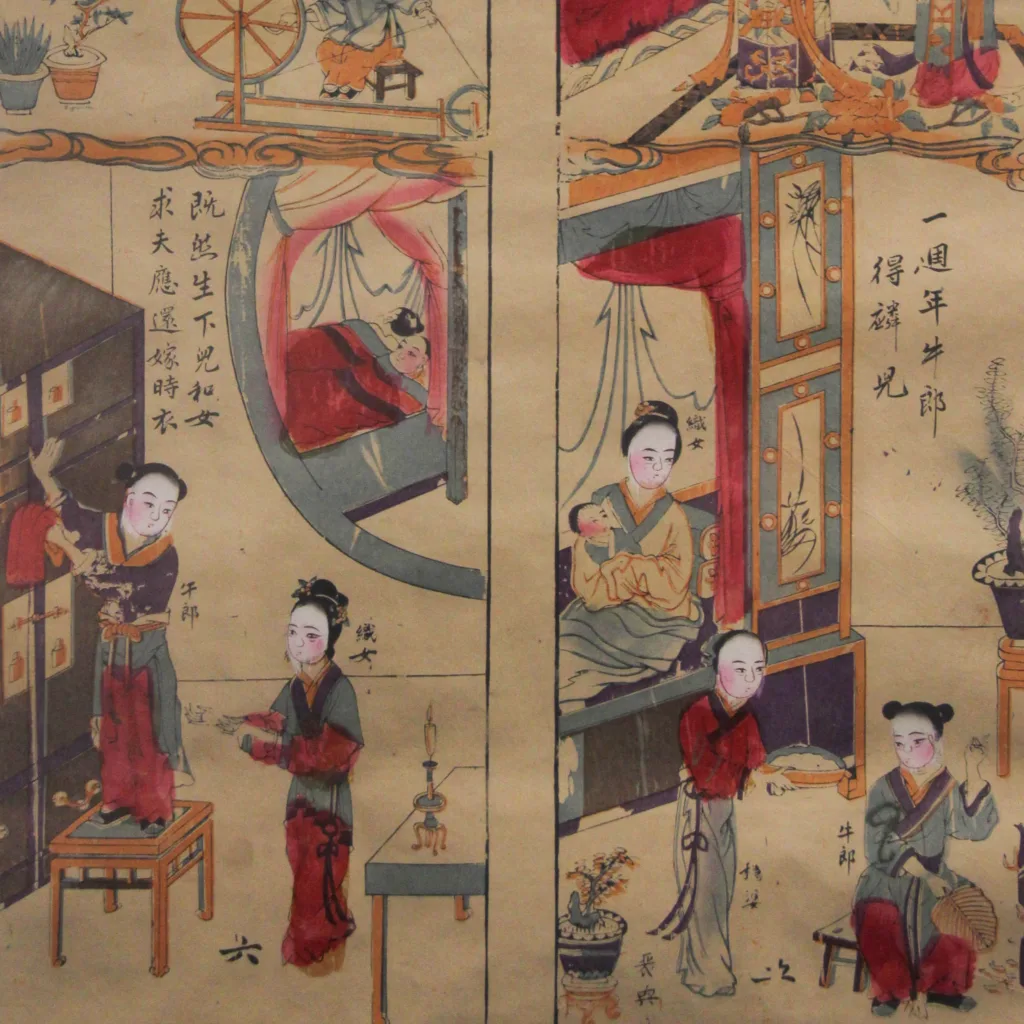
The vibrant images in Nianhua are not just for show; they carry with them centuries of cultural wisdom and stories. Let’s dive into some of the most iconic symbols found in these artworks. The Door Gods, depicted as mighty warriors, are not just about strength; they symbolize protection and the warding off of bad luck. Then there’s the Kitchen God, a unique figure who is believed to oversee the moral conduct of the household, reminding us of the importance of virtue and ethics in daily life.
One of the most delightful motifs in Chinese Nianhua is the depiction of chubby babies. These adorable figures are more than just cute; they represent happiness, prosperity, and the hope for a thriving family future. And of course, we cannot overlook the God of Wealth, a favorite during the New Year, embodying the wishes for prosperity and financial success.

Nianhua also showcases a rich array of auspicious animals like dragons and phoenixes, each carrying its own meaning. Dragons, for example, are not just mythical creatures but symbols of power and good luck. Similarly, scenes of nature in these artworks, such as blooming peonies and serene landscapes, are not random choices. They reflect harmony, beauty, and a connection with the natural world.
What’s truly remarkable about Nianhua is how it has evolved, especially during significant historical periods like the rise of the Chinese Communist Party. The transformation of these artworks from traditional themes to more politically oriented content provides an insightful look into how art can be influenced by and reflect societal changes.
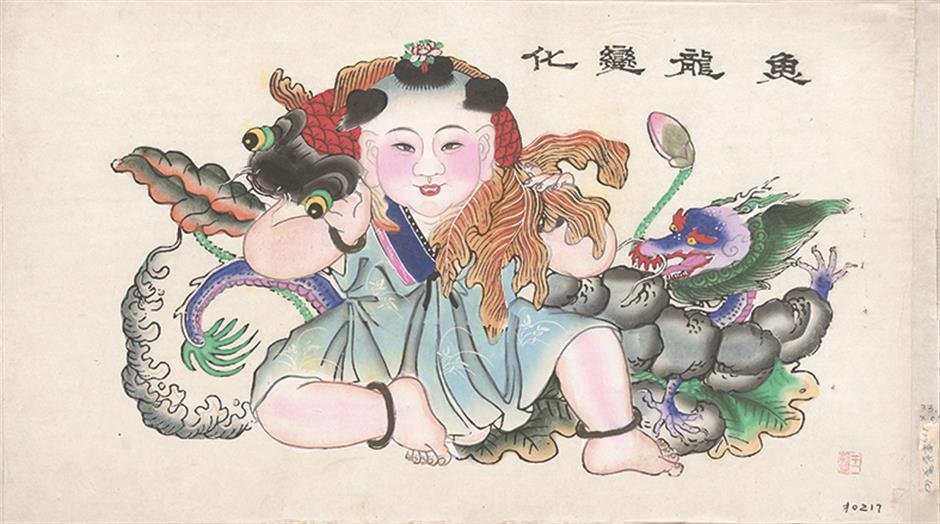
Propaganda, Factories, and Mass Production of New Year Posters
In Chinese culture, the distinction between literati art and folk art, such as Nianhua, is deeply rooted in societal divisions and expectations. Literati art, created by the scholarly elite, often reflects refined, philosophical ideals and is exemplified in classical forms like ink painting and calligraphy. These works were esteemed for their subtlety, sophistication, and alignment with Confucian and Taoist principles. On the other hand, folk art like Nianhua, which originated from the common people, is characterized by its vibrant, straightforward style and practical themes. Chinese Nianhua often portrays everyday life, folklore, and popular beliefs, making it more accessible to the general population. This dichotomy between the two art forms mirrors the historical social stratification in China, where literati art symbolized the educated class’s cultural dominance. In contrast, folk art represented the cultural expressions of the wider populace.
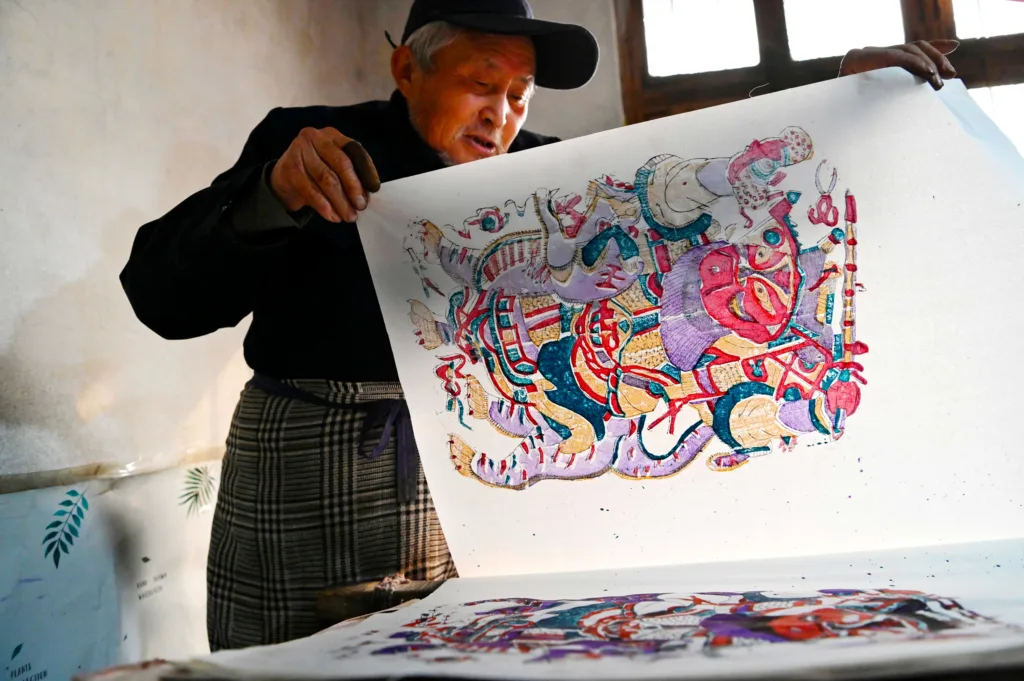
The evolution of Nianhua from traditional folk art to a medium of propaganda under the Chinese Communist Party (CCP) is a striking example of how art adapts to shifts in political landscapes and industrialization.
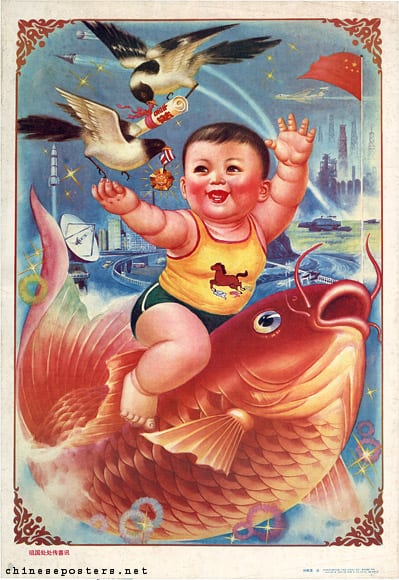
As China moved towards industrialization, the production of Nianhua transitioned from small, artisanal workshops to large-scale factories. This shift brought about a notable change in the Nianhua creation process – from unique, handcrafted art pieces to mass-produced prints. This change, while increasing accessibility, also led to a loss of the individualistic charm that characterized traditional Nianhua.
The rise of the CCP marked a significant turn in the purpose and style of Nianhua. Once steeped in folklore and symbols of good fortune, these pictures were repurposed as tools for disseminating state propaganda. The CCP harnessed the cultural significance of Nianhua, transforming them into vehicles for revolutionary themes and imagery that glorified the Party’s ideologies and achievements. This shift was a strategic move to leverage the widespread appeal of Nianhua for political messaging.
This period also heralded a change in art education in China. Traditional art academies, which had previously embraced the philosophy of “art for art’s sake,” began to align with the Party’s doctrine of “art to serve the people.” This ideological shift was part of a broader cultural policy that encouraged artists and students” to engage and “learn from workers and reflecting the” Party’s emphasis on “proletarian values.” Consequently, art education started focusing on creating politically resonant works, diverging from traditional artistic expressions to align with the Party’s revolutionary narratives.
New Symbols and Imagery
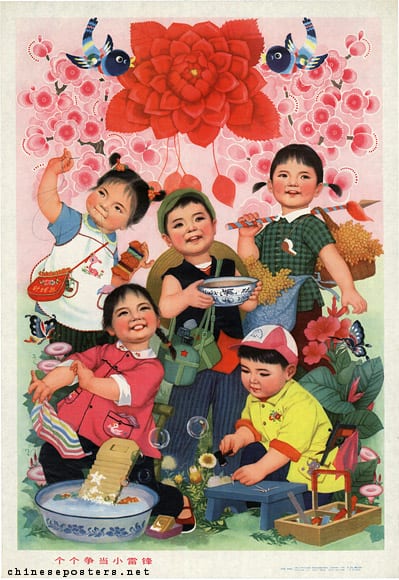
With the rise of the Communist regime, Nianhua underwent a significant transformation in terms of themes and imagery. Traditional moCCP’sof prosperity and good fortune gave way to symbols that aligned with Communist ideology:
- Revolutionary Figures: Iconic leaders and revolutionary heroes became prevalent subjects, replacing the historical and mythological figures of the past. These images aimed to inspire admiration and loyalty towards the Communist leadership.
- Proletarian Life: The everyday life of the workers and peasants was glorified. Images depicting industrious farmers and factory workers and scenes of agricultural and industrial labor were common, symbolizing the backbone of the new society.
- Military Themes: Nianhua also began to incorporate military themes, showcasing soldiers and national defense motifs, reflecting the era’s emphasis on strength and resilience.
- Socialist Realism: This artistic style became prominent, focusing on the realistic depiction of Communist values. It served as a tool for educating the masses about the ideals and achievements of the regime.
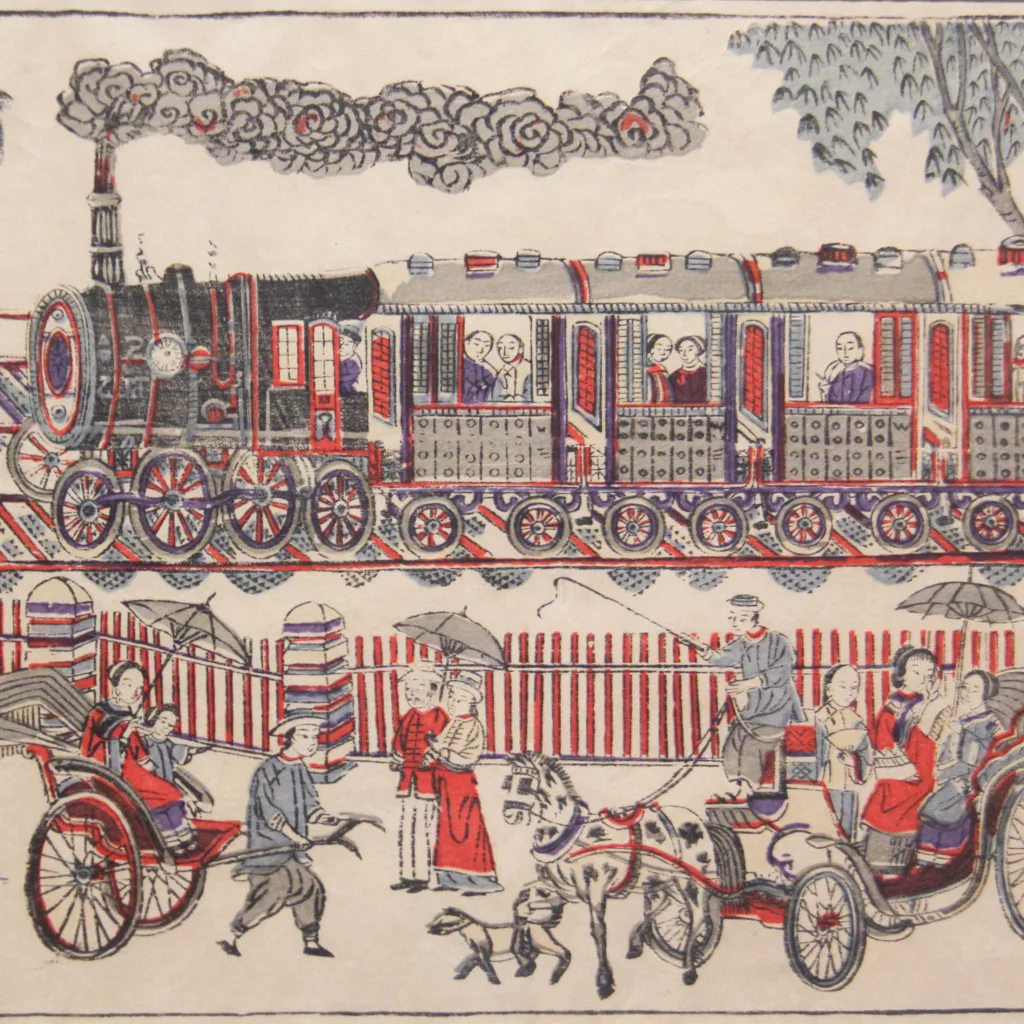
Primary Centers of Production of Chinese Nianhua Posters
The mass production of Chinese Nianhua was centralized in key locations, with one of the most notable being Yangliuqing in Tianjin. Historically renowned for its Nianhua production, this town adapted to the new political climate, becoming a hub for creating these Communist-themed artworks. Other centers also emerged, but Yangliuqing retained a special significance due to its historical association with Nianhua art.
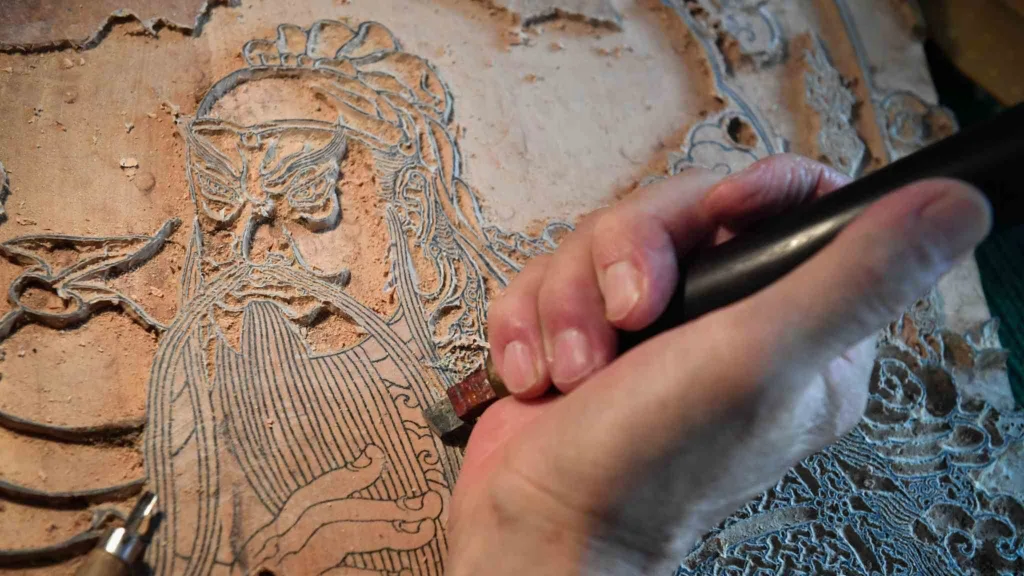
In these production centers, the process of creating Nianhua became more standardized and less individualistic, reflecting the industrial and collective ethos of the Communist era. The emphasis was on quantity, uniformity, and disseminating the Party’s message through this traditional art form.
In contemporary China, Nianhua’s significance has evolved, reflecting the nation’s journey through history and cultural changes. While traditional Nianhua, deeply rooted in folklore and good fortune, has seen a decline in mainstream popularity, it remains an essential part of cultural heritage. Contemporary artists are reinterpreting Nianhua, merging traditional motifs with modern themes, ensuring its relevance in a rapidly changing society. This resurgence, especially in areas like Taohuawu, showcases Nianhua’s enduring appeal and adaptability, symbolizing China’s rich cultural tapestry that bridges the past and the present.
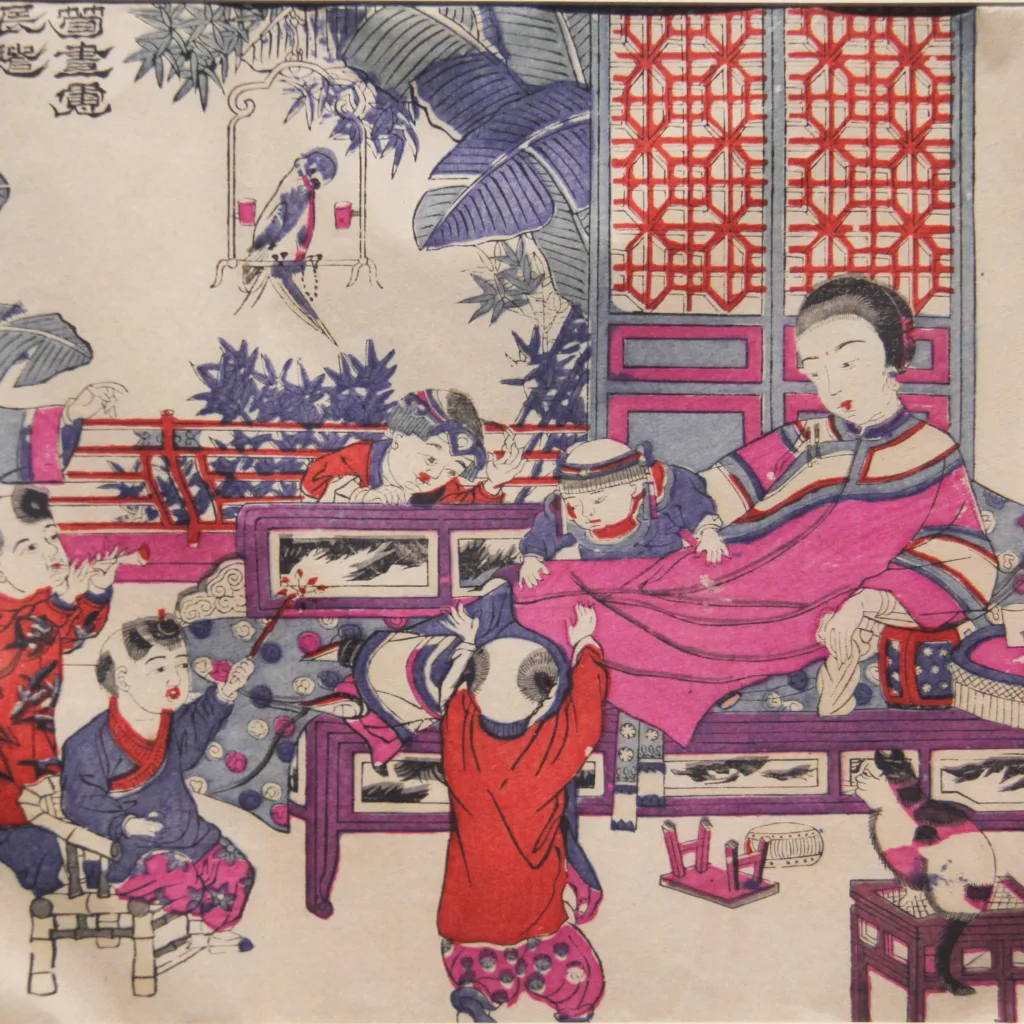
References
- The Cult of Happiness: Nianhua, Art, and History in Rural North China by James A. Flath
- Nianhua: New Year Pictures from China on National Library of New Zealand Blog
- New Year Prints on Columbia University Libraries Digital Collections
What do you think? Leave a comment below!

